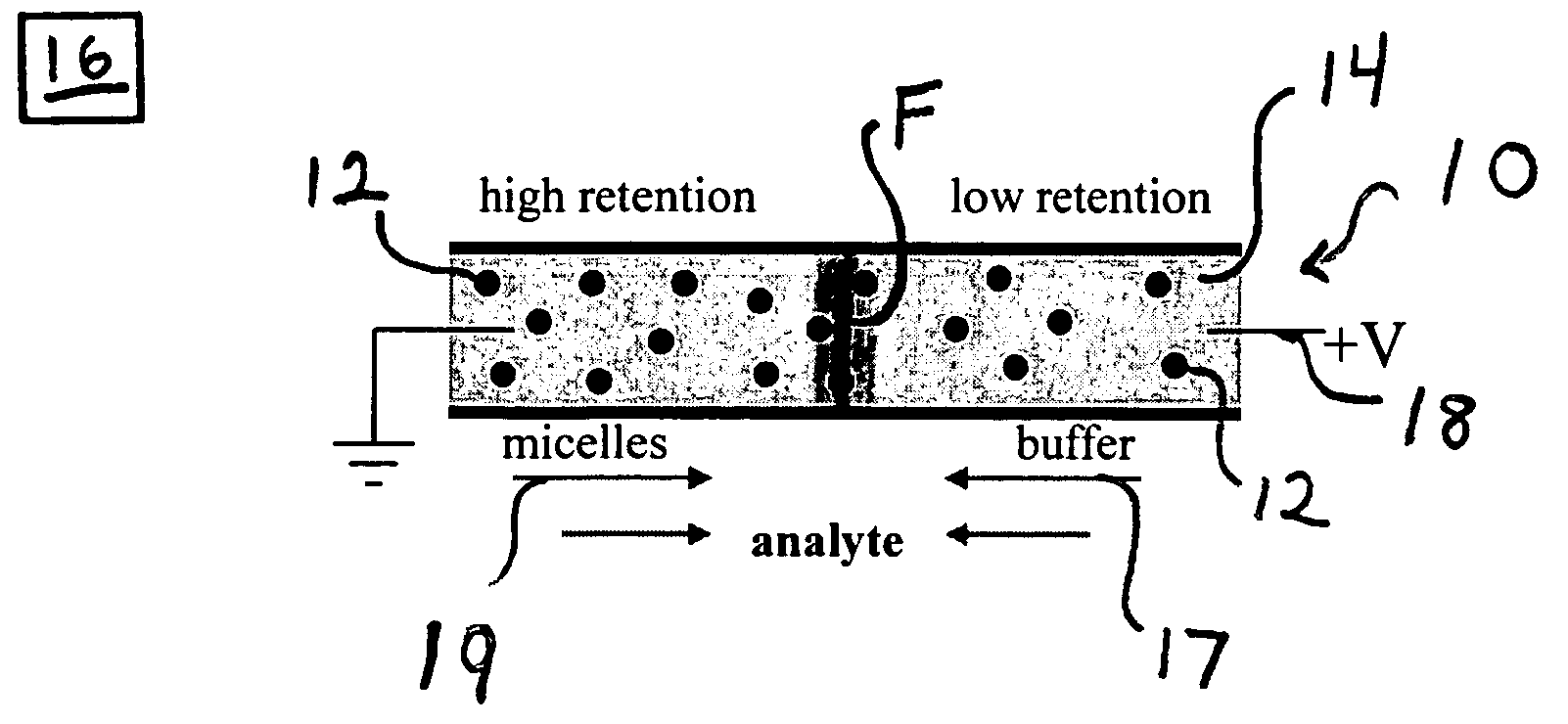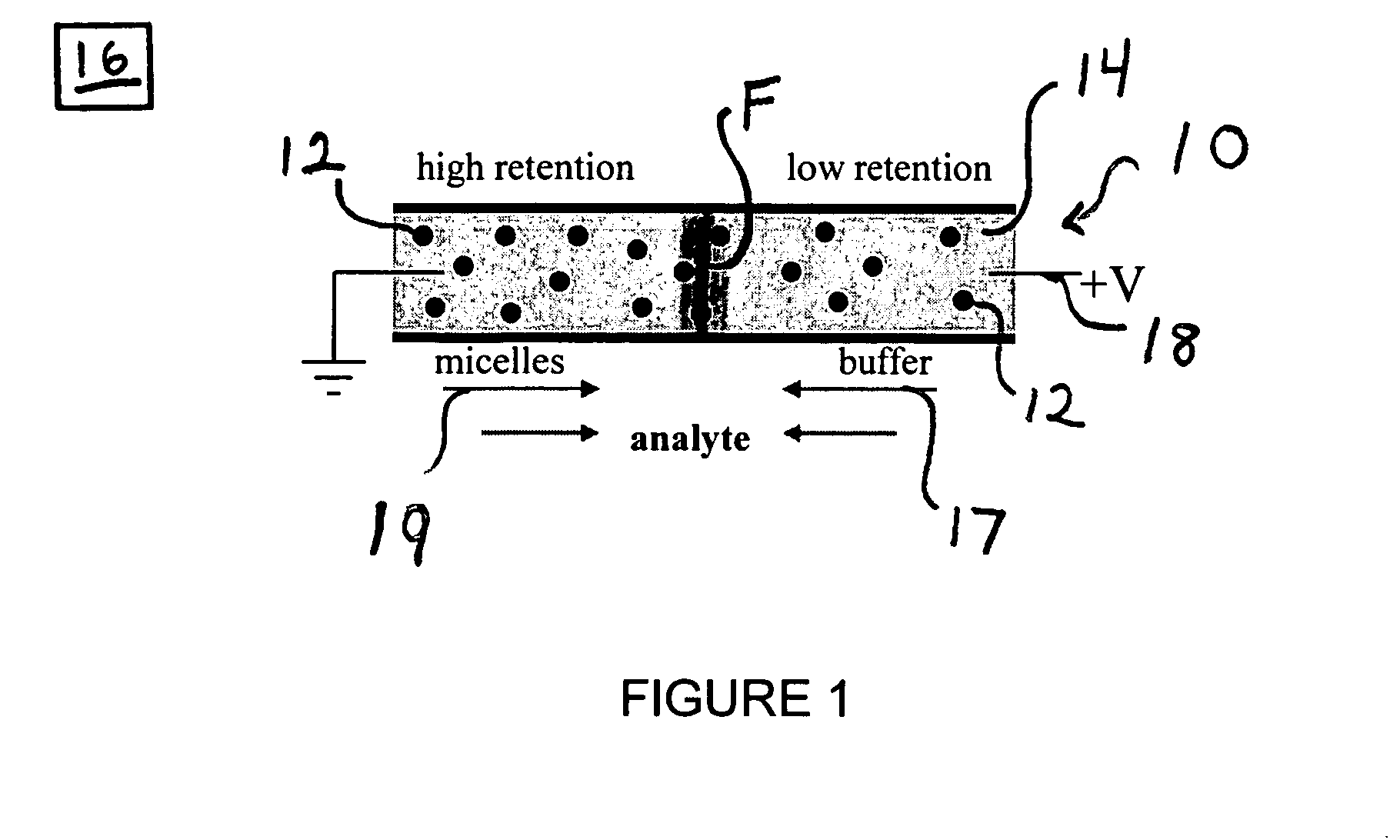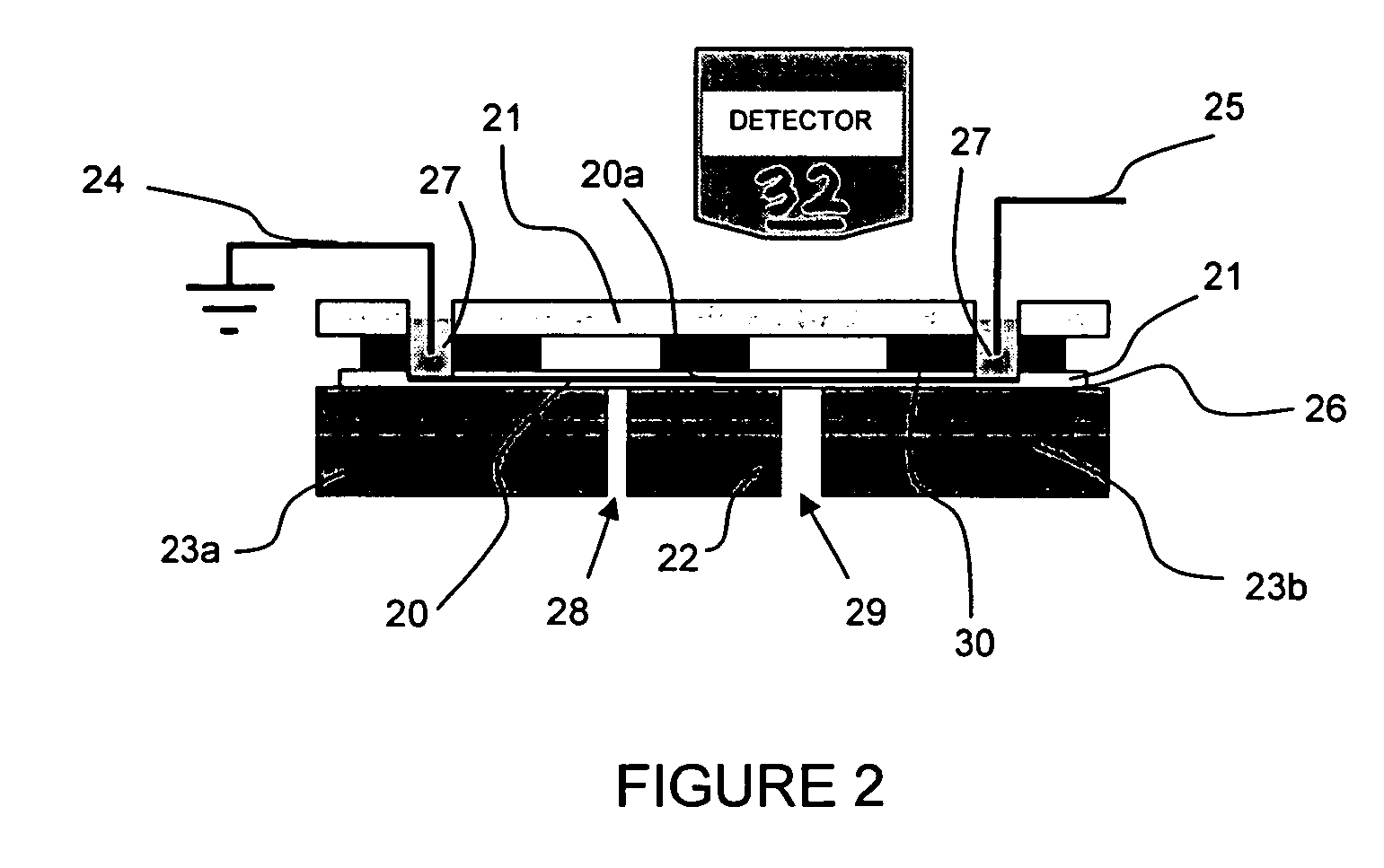Micellar gradient focusing
a gradient and micro-scale technology, applied in the direction of fluid pressure measurement, liquid/fluent solid measurement, peptide measurement, etc., can solve the problem of working with analytes with non-zero electrophoretic mobility
- Summary
- Abstract
- Description
- Claims
- Application Information
AI Technical Summary
Benefits of technology
Problems solved by technology
Method used
Image
Examples
Embodiment Construction
[0024]The present method provides focusing, i.e., concentrations and / or separation, based upon affinity of an analyte for a pseudostationary phase such as a micellar phase. The method works by creating a steady-state gradient in the retention factor of the solute of interest to the pseudostationary phase (i.e., affinity of solute for the micelles) in a separation channel such as in capillary systems or in a microfluidic chip. The solute has an inherent electrophoretic mobility when free in solution. When interacting with the pseudostationary phase, the solute assumes the electrophoretic mobility of the pseudostationary phase. On one side of the gradient, the solutes strongly interact with the pseudostationary phase and have a net mobility dominated by that of the pseudostationary phase. On the other side of the gradient, the retention factor is low and the solute assumes its native electrophoretic mobility. If the pseudostationary phase is charged, a combination of electrokinetic an...
PUM
| Property | Measurement | Unit |
|---|---|---|
| temperatures | aaaaa | aaaaa |
| temperatures | aaaaa | aaaaa |
| voltage | aaaaa | aaaaa |
Abstract
Description
Claims
Application Information
 Login to View More
Login to View More - R&D
- Intellectual Property
- Life Sciences
- Materials
- Tech Scout
- Unparalleled Data Quality
- Higher Quality Content
- 60% Fewer Hallucinations
Browse by: Latest US Patents, China's latest patents, Technical Efficacy Thesaurus, Application Domain, Technology Topic, Popular Technical Reports.
© 2025 PatSnap. All rights reserved.Legal|Privacy policy|Modern Slavery Act Transparency Statement|Sitemap|About US| Contact US: help@patsnap.com



